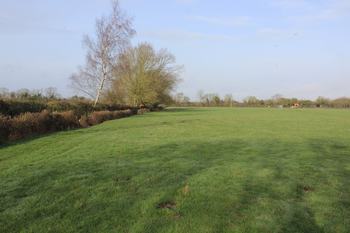Site Data from an Archaeological Evaluation at Catalyst Bicester, Bicester, Oxfordshire 2019
Cotswold Archaeology, 2021. https://doi.org/10.5284/1088116. How to cite using this DOI
Data copyright © Cotswold Archaeology unless otherwise stated
This work is licensed under a Creative Commons Attribution 4.0 International License.
Primary contact
Cotswold Archaeology
Building 11
Kemble Enterprise Park
Cirencester
GL7 6BQ
UK
Tel: 01285 771022
Fax: 01285 771033
Resource identifiers
- ADS Collection: 4108
- DOI:https://doi.org/10.5284/1088116
- How to cite using this DOI
Introduction

This collection comprises site data from an archaeological evaluation, undertaken by Cotswold Archaeology in February/March 2019 at Catalyst Bicester, Bicester, Oxfordshire.
An archaeological evaluation was undertaken by Cotswold Archaeology in February/March 2019 at Catalyst Bicester, Bicester, Oxfordshire. Fifty seven trenches were excavated with archaeological features being recorded in twenty seven. Unfortunately a very high seasonal water table resulted in localised flooding within many of the evaluation trenches making hand excavation difficult.
The evaluation revealed evidence of a cremation cemetery within Trench 22, along with a series of associated ditches and discrete features which are likely to be contemporary to a late prehistoric / Romano-British landscape which demonstrates evidence for farming, settlement and burial rites close to the Roman road on the western site boundary of the site which ran from Bicester to Towcester. The presence of the cremation cemetery within the site, allied to the results of the previous geophysical survey indicates that it is likely that the limited number of cremations identified within Trench 22 is part of a larger cremation cemetery in the vicinity of the trench.
Prehistoric activity is likely to have taken place within the vicinity of Trench 7 based on the results of environmental sampling, with the possibility that similar activity took place in the vicinity of trenches 21 and 23. The results of the evaluation are similar to those from within the chicken farm to the south west of the site which revealed evidence for extensive Romano-British pits land reclamation and water management (in addition to a series of pits and a metalled road surface). Many of the trenches within the current evaluation, especially to the north and west of the site demonstrate evidence for quarrying and water management. These features, along with the high water table observed within many of the trenches, indicates drainage and water management on the site would have historically been a significant factor in utilising the site.





